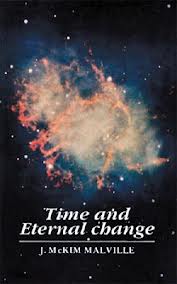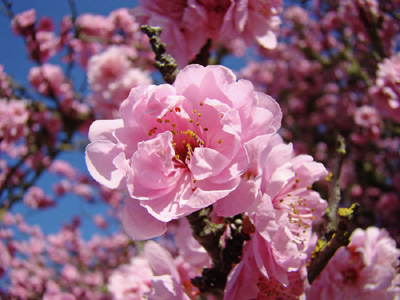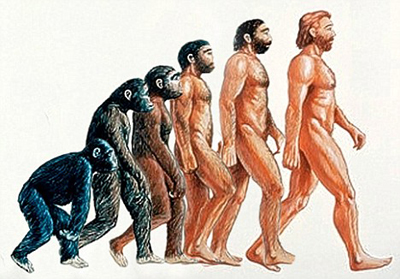Science
The law of change
Editor’s note
Change denotes progress and an increasing perfectibility. It is the phenomenon of change that helped the transition from simpler to increasingly complex forms in biological, social and psychological matrices. It is the pressure for change that has increased our cognitive repertoire, expanding our horizons of knowledge and experience. An evolution of consciousness would lead to a qualitative progress in the very paradigm of change, paving the way for the manifestation of a species that exceeds the present functioning of the mind.
Change is the law of life, its first and foremost law. Yet it is paradoxically also the most unacknowledged and easily forgotten law. The reason why change is the only indisputable truth of life, one that can be most safely predicted without fear of being wrong, is that Nature is in perpetual movement. Everything that is driven by Nature is also in a state of perpetual motion. Sometimes this motion is not perceived by our eyes because it takes place deep within, which the surfaces of life hardly reveal. It is like the chick preparing its flight inside a hard eggshell or the butterfly gathering colours and growing wings within the inconspicuous pupa of a caterpillar. At other times we do not notice the change simply because the time-frame in which we live is too brief and the process of change rather slow for our limited lifespan. It is again only through large spaces of time that the change becomes visible or evident to us like the changing terrains. As the geologists tell us, long before the modern nations were born, the boundaries of land masses itself had drifted and changed a number of times. The rocks, the minerals are all undergoing this process of change. The third reason for our inability to notice the change is because everything in creation turns in certain grooves fixed by Nature. Its position is changing every moment, but only in circles, waiting to return to the starting-point of its journey after completing each cycle. The atoms, the stars, the suns, the galaxies drift incessantly, yet their position appears fixed since the old relation of each element with another changes very little.
Constancy is an illusion created by our inability to notice the change taking place at the micro level. Fixity is an illusion created by the laws of habit that binds everything to a groove through which Nature has once poured its forces and energies. Of course, Nature fulfils a great purpose through this apparent fixity created by habit. It fixes the limits of objects and even species. The elephant-trainers know this well and use this principle. They first train the elephant tying a chain around the pachyderm’s feet. Later, once the animal is primed and conditioned, the chains are taken off and yet the animal behaves as if they are still there preventing him from escaping its unfortunate slavery to a creature inferior to it in strength and size. The bonds are always within, as the mystics tell us; the fetters outside are only an occasion. Nature sets the limits but it is we who accept it. After a while, we are unable to undo the limits since we have been made a party to it with our consent and acceptance.
Yet even behind the seeming appearance of stability, behind the state of quiescence and the routine mechanical life fixed within limits, a change is preparing itself. In Nature’s inferior creations, this change prepares itself through the shock and stimulus of outer challenges. Exposed to the ruthless forces of Nature, animal creation has to learn to adapt and this adaptation unlocks a hidden door to an evolutionary change. In animal life however, this change comes about subconsciously and through a slow ascension of one species into another through many steps and scales of evolution. In the process of this ascension, there are stages that are merely experimental and abortive. These are the vanished intermediate species through which Nature moves towards the next leap.
Human limits
The same process and law of habit and change applies at the human level. Nature ties us within our human limits, — limits of speech and action, even limits of thought and feelings, of will and impulsion through the fixed habitual grooves. Yet often unnoticed by us, a change is preparing itself. It often follows certain steps that are akin to the steps and stages of our ascension. The change first brews within our inner being in the form of a general state of dissatisfaction, often for no clearly discernible reason. Sometimes there may be a seemingly outer cause but if we closely analyse it, we shall find that this outer cause is again only a device, a means or an excuse used by Nature to precipitate or perhaps bring to awareness something that was already taking place within us. Sometimes this change declares itself as a revolt against tradition and the fixed norms and forms to which the individual has so far conformed himself. At other times and in more conscious individuals, this change starts through a conscious shaping of their thoughts and feelings, will and impulsions. Their outward actions are only an expression of the inner change. In a few other individuals, Nature conducts this process of change by breaking the very outer mould before touching the inner. This expresses itself as oddities of behaviour and strange actions that are not generally understood by average humanity since they are unconventional and break away from stereotypes. But the most typical method that Nature has used so far for human evolution is the phenomenon of a genius. In a genius, Nature simply overshoots itself in one dimension. It rushes through the heart and mind or the will of the person chosen for such an experiment with an abundance of energies that like an inner tsunami break the fixed limits and set new yardsticks and measures. A new possibility is thereby created within the ambit of humanity, though at times at the expense of one individual. Since the instrument is not always ready for this great gigantic leap, it may well crack up in parts, creating what is erroneously termed as an eccentric genius, without a clear understanding of the actual phenomenon.
But man can do something more, something that Nature cannot yet do in him except for the preparation. Man can consciously collaborate with Nature and this collaboration need not stop only as an equal but can go to the extent of even bettering her. This is perhaps one of the things that make man unique in that he tries to always improve upon Nature by studying and learning her secrets and then applying them in unique ways. It applies as much with the outer forces of Nature as to her inner psychological movements. In other words, man can consciously change. This is his unique opportunity and privilege.
Going further
Besides, the change within man need not be confined merely to a process of outer adaptation to the environment but may go further. It may break the barriers not only of the individual but of the human race as such, creating new sub-types within humanity itself. Whether we like it or not, humanity is stratified in different layers, even though physically or rather physiologically we are all more or less the same. But subjectively, from the point of view of thoughts and feelings, will and motive, tendencies and temperaments, ideas and idealism, capacities and possibilities, self-regard and world-regard, mankind is variously stratified into different evolutionary levels. Each of these evolutionary levels is like a step of our human ascension, from its near animal state tied down merely to bodily needs, through layers of our vital and mental evolution, climbing to unseen summits of our spiritual possibilities.
The law of change has inbuilt within it a direction towards which the change is leading the organism. Change may be a push towards something new, or it may be a constant requirement for renewal and adjustment of existing balance, or else it may be a change towards destruction. Each of this follows a certain process. When the change is towards a new creation, a bringing in of something new that was not there before, then Nature goes through a stage of preparatory experiments. The first stage is the stage of incubation when we simply feel the restless urge towards something vague and indistinct that we do not quite understand but are haunted by it. Next comes the stage of experimentation. These experiments often lead to what we in our ignorance may call ‘wasted efforts’ or failed attempts. But in actuality it is not so. It is simply a many-sided opening that Nature is creating so that the change may not be merely a small improvement but an actual qualitative leap. It opens now one door and then closes it until the rest of our being is ready. It plays now with one possibility and then stops it halfway through since it is only one strand that must harmonise with other lines along which Nature moves. And though the form on which the experiment is undertaken is cast aside after the work is over and the experience gained, the essence and the learning is never lost. It is like a civil engineer who draws and rubs off various schemes and sketches of a huge building until he hits finally upon the desired plan. A third stage intervenes when we assimilate the various experiences, the results of past experiments of Nature. This phase is a phase of relative quiescence. But behind the veil a change is being worked out rather rapidly. At times during this phase there is a sudden catharsis of certain elements that are no more needed, though they have had their role in the past. These phases may appear as abnormal to a casual onlooker since they are not in tune with the rest of the personality. But the being is simply exhausting certain tendencies that have been accumulated during its evolutionary adventure. Finally there comes the stage of flowering and blossoming. The whole being is ready for the evolutionary leap. Out of the human there emerges the Godhead who stood behind the brute machine. Wisdom raises its head and our heart attunes itself to a Will that was so far beyond our reckoning. Our life responds to the One Power that built the worlds and our very body becomes a conscious instrument of Beauty and Truth. Our dim-lit eyes that scan the surfaces and miss the depths shed their mortal Ignorance and are filled with a Light that reveals to us what the deepest and most careful mental analysis could not fathom.
Such is the far-off change being prepared in and through man. No wonder Nature takes time and lets this change flow through centuries and millenia. The human soul gathers the essence of the experiences of one life and leaves the rest, not as a waste, though it may appear as such to our eyes, but as thrown-out and worn-out material that yet goes into feeding others who need these experiences for their growth, who are yet languishing at the stage of the evolutionary curve which we have successfully crossed.
(To be continued)
Dr. Alok Pandey is a doctor practising at the Sri Aurobindo Ashram. He also a member of SAIIIHR and an Editor of NAMAH.
Share with us (Comments, contributions, opinions)
When reproducing this feature, please credit NAMAH, and give the byline. Please send us cuttings.


 Blossoming
Blossoming
 Flowering
Flowering
 Evolution
Evolution